
There isn’t a one-size-fits-all diet for all dogs
While some dogs do well on a plant-based diet, others don’t. Same goes for meat-based diets. “The more decades I spend in veterinary medicine with an emphasis on nutrition, the more I’m convinced that diets for dogs are highly individualized and you have to pay attention to how your dog is doing on the diet you’re feeding,” says Ernie Ward, DVM, a San Francisco–based veterinarian and the founder of the Association for Pet Obesity Prevention. If it’s not working, switch. You’ll know there’s a problem if you see these telltale dog-illness symptoms.
That said, there are some general guidelines regarding health and nutrition that every dog parent needs to know. Reader’s Digest spoke with Dr. Ward and three other pet experts to find out what you should consider before deciding on the best diet for your dog.
Get Reader’s Digest’s Read Up newsletter for more pets, humor, cleaning, travel, tech and fun facts all week long.
About the experts
Reviewed for accuracy by: Amy Attas, VMD, an award-winning veterinarian, the founder of City Pets and the author of |
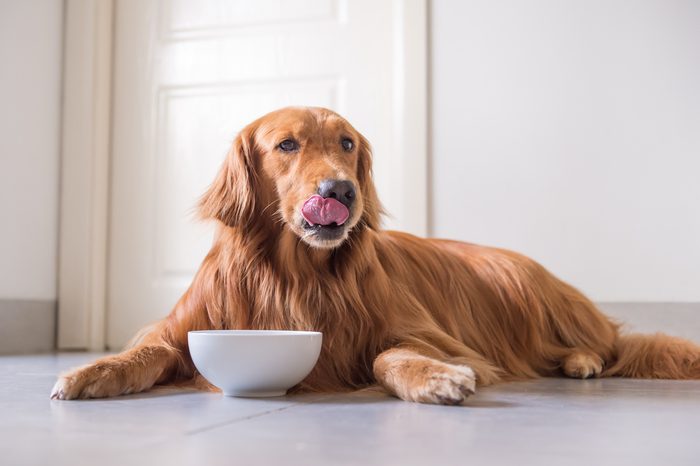
Evaluate a diet for its nutrients, not its ingredients
Your personal food philosophy will most likely determine what you feed your dog. While some people might think a meat-based diet is best for their dog, others may believe a plant-based diet is. And that’s OK, as long as you follow this rule: “Make sure whatever diet you choose is nutritionally adequate,” Dr. Ward says, adding that there are very few commercial dog foods available in the United States that he takes issue with. The one exception? Raw diets, which he says may cause nutritional inadequacies in dogs.
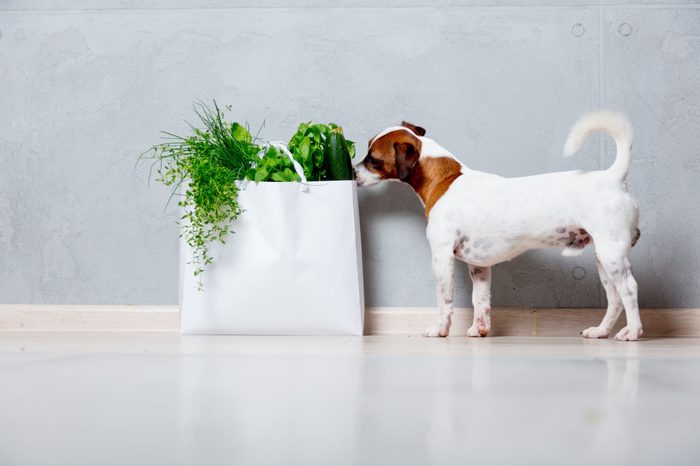
Consider a plant-based diet
Dogs (and cats) have a tremendous impact on the environment. In fact, one study found that they’re responsible for 25% to 30% of the environmental impact of meat eating in this country. Because animal agriculture is responsible for up to 14.5% of total greenhouse-gas emissions, it makes sense that switching dogs to a plant-based diet could help quell the effect.
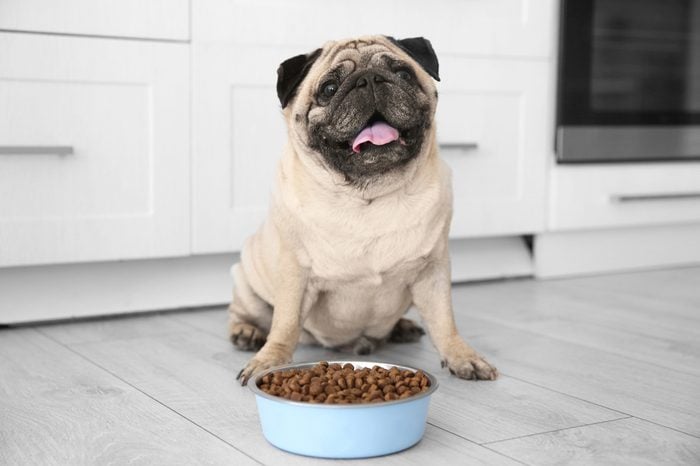
Skip processed foods
Highly processed food is as bad for pups as it is for people. “Processed foods, which are foods that have been cooked at high heat or undergone an extrusion process, will never offer the fresh nutrients that you get from eating fresh food,” says Judy Morgan, DVM, a holistic veterinarian in Clayton, New Jersey, and author of Yin & Yang Nutrition for Dogs. “As with people, when dogs eat highly processed foods, we see an increase in chronic inflammation, which can show up as arthritis, chronic elevation of liver enzymes, immune thyroiditis and inflammatory bowel disease, among others.”
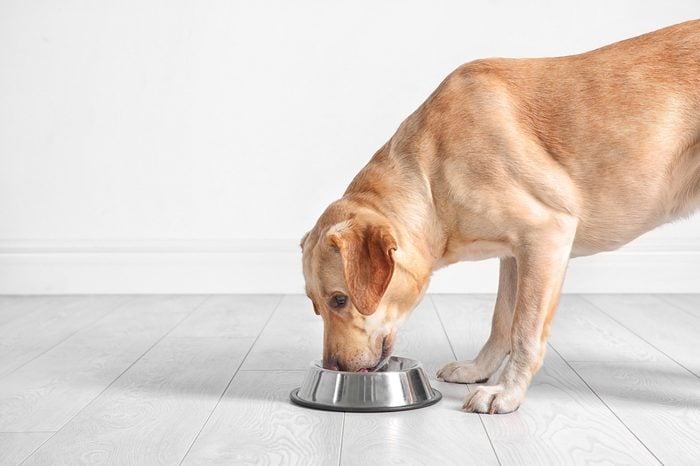
Look for the AAFCO label
The Association of American Feed Control Officials (AAFCO) helps ensure minimum nutritional requirements for your pets, and Dr. Ward says its label could be a shortcut for assurance. But know this: The AAFCO doesn’t regularly inspect or guarantee that the amounts of nutrients stated on the bag are actually in that food. That’s one reason Dr. Ward recommends raising the bar even higher by checking that the nutrient levels meet or exceed European Pet Food Industry guidelines, which have different requirements for certain nutrients.
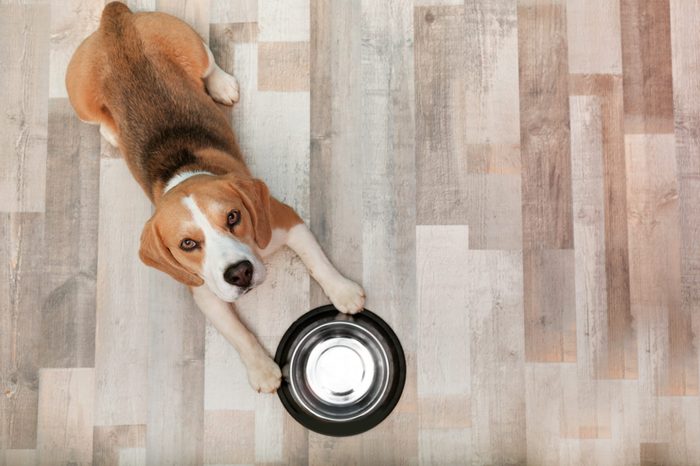
Opt for wet food, if possible
Most people serve their pooches dry kibble, generally because it’s convenient and often cheaper. But canned wet food is really a better choice. “You get higher protein and moisture content, so it’s more specific to what dogs need,” says Dr. Morgan.
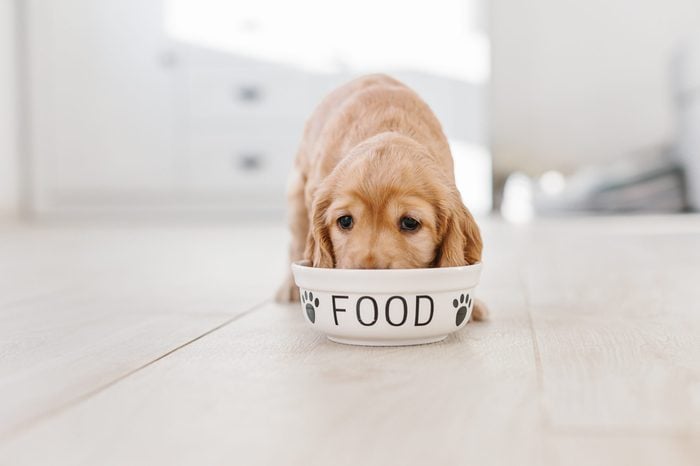
Choose a low-grain diet
Grain-free is a hot nutrition trend right now, but only a small percentage of dogs actually need to eat grain-free because of allergy issues. “It’s important to consider factors like your dog’s breed, age, activity level and overall health when making this decision,” says Lindsay Butzer, DVM, a small-animal veterinarian and PetMeds partner. Plus, the FDA is investigating the potential link between certain grain-free dog food and a type of heart disease called dilated cardiomyopathy (DCM). “This condition can lead to heart failure and even death in some cases,” Dr. Butzer says. “Additionally, some grain-free diets may not provide the proper balance of nutrients your dog needs, which can lead to other health issues.”
Instead, Dr. Ward advocates feeding your pooch a low-grain diet. “Grains are carbohydrates that contribute calories and can lead to weight gain, so I recommend a reduced carbohydrate diet—or in other words, a lower grain content,” he says. However, it’s always best to consult with your veterinarian to determine the optimal diet for your dog’s specific needs.
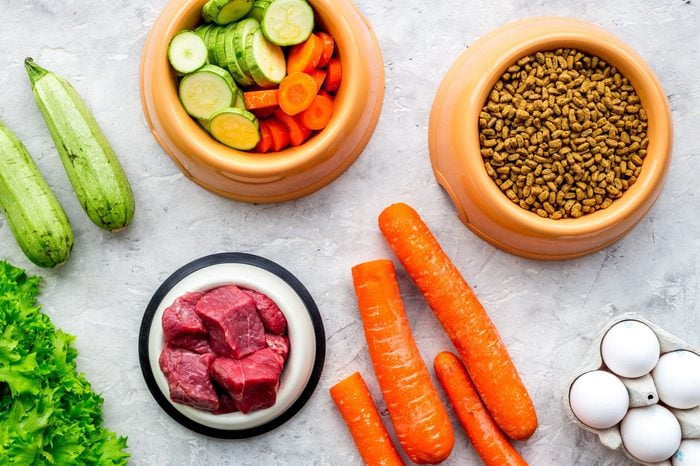
Make dry food more nutritious
If dry kibble is a more convenient option for you than canned, no problem, Dr. Ward says. But do add fresh vegetables and fruit to your dog’s diet along with this type of food. Just don’t include onions, citrus, avocado, grapes or these other foods that can be toxic to dogs.

Buy food that’s appropriate for your dog’s life stage
Your dog’s nutritional needs change with age. That’s why you want to make sure you’re buying food for the right life stage, whether that’s puppyhood, adulthood or the senior years, says Dana Brooks, president and CEO of the Pet Food Institute.
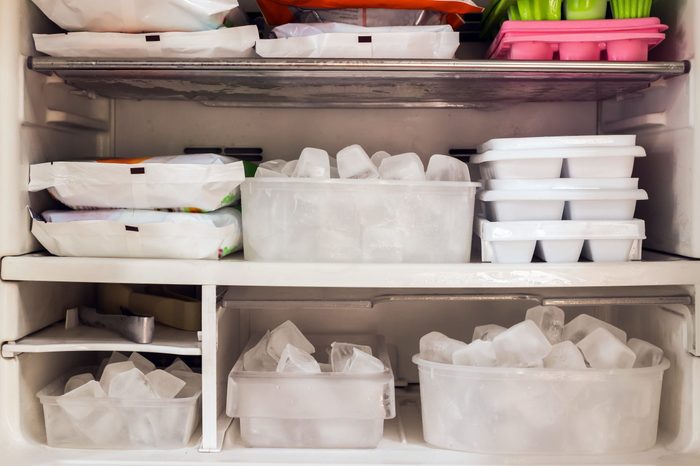
Try frozen meals
No doubt you’ve heard about cooked frozen meals, many of which are delivered to your home (like The Farmer’s Dog, Olly, PetPlate, NomNomNow and ChiDog). But are they worth the price? Yes, especially given how convenient they are, says Dr. Morgan. Freeze-dried or rehydrated meals offer benefits similar to frozen fresh meals. Although they require a small amount of work—usually mixing the food with water—they’re probably healthier than kibble, Dr. Morgan says. “These foods are closer to whole-food nutrition, which is always better for dogs.”
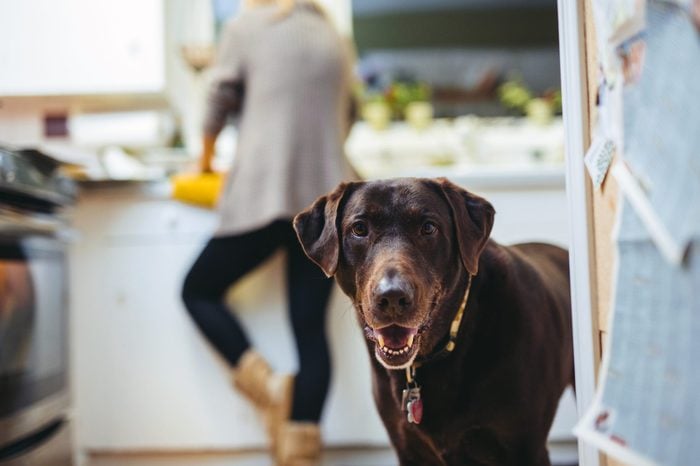
Cook for your dog
Home-cooked meals can be an effective way to feed your dog. But there’s a huge caveat: “You have to make sure you’re providing balanced meals,” Dr. Morgan says. In one study from University of California–Davis, researchers evaluated 200 recipes for home-prepared dog foods and found that 95% lacked the necessary levels of at least one essential nutrient, and more than 83% had several nutrient deficiencies—many of which could result in serious health issues. If you want to go this route, researchers recommend consulting a board-certified veterinary nutritionist or, at the very least, your own vet.
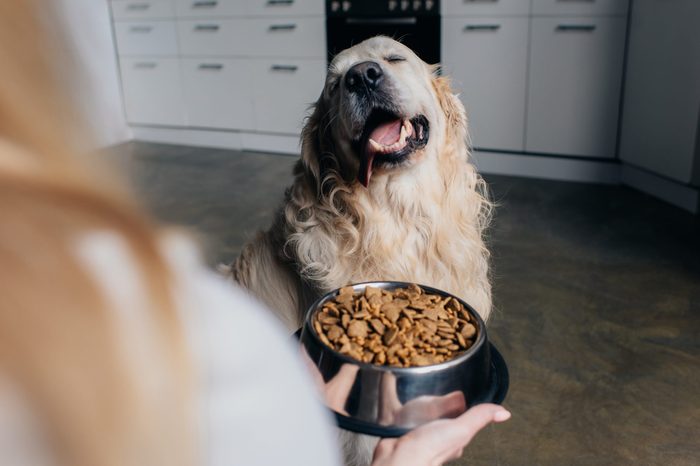
Feed your dog one to two times a day
Dogs evolved to eat bigger meals less frequently. “Their stomach can expand to five times its volume, which is almost unique in the animal world,” Dr. Ward says. That’s why they have no problem eating only one to two times a day. Dogs, like people, can overeat. If that’s the case with your pup, follow these tips to help your dog lose weight.
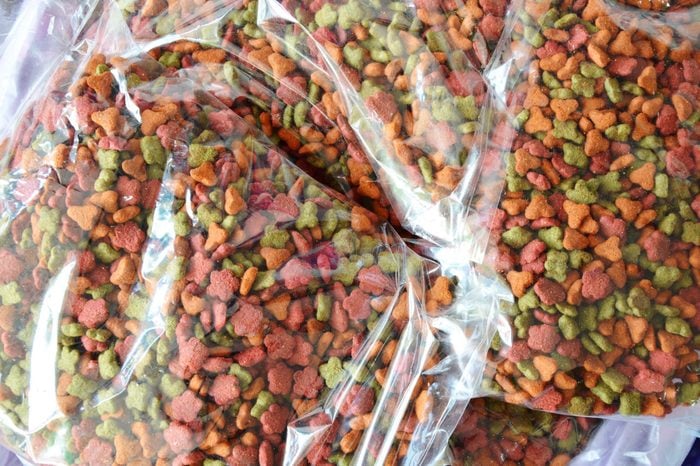
Buy small bags of dry kibble
If you opt for dry kibble, buy a bag you can use within three weeks. “Kibble is sprayed with fats for nutrition and taste, but those fats will oxidize quickly and become rancid, which can cause pancreatitis and inflammation in your pet,” Dr. Morgan cautions. When you open the bag and expose it to air and light, it further oxidizes; heat can also create oxidation. To store it properly, keep the food in the bag in a sealed container, and roll it down tightly after each use. As with all food, you should also check the expiration date.

Go light on the treats
Pet obesity is an epidemic in this country, and because excess food can drive up weight, you need to dole out treats responsibly. “Treats should make up no more than 10% of your pet’s daily calories,” Brooks says. The healthiest treats for dogs? Fruits and veggies, excluding any that are toxic to dogs, Dr. Morgan says. Try berries, apples, carrots, broccoli and green beans, even frozen beans. Of course, food is only part of the equation when it comes to having a healthy pup. You’ll also want to figure out how much exercise your dog really needs.
Why trust us
At Reader’s Digest, we’re committed to producing high-quality content by writers with expertise and experience in their field in consultation with relevant, qualified experts. For this piece, Karen Asp tapped her experience covering dog nutrition, and then Amy Attas, VMD, an award-winning veterinarian and the author of Pets and the City: True Tales of a Manhattan House Call Veterinarian, gave it a rigorous review to ensure that all information is accurate and offers the best possible advice to readers. We verify all facts and data, back them with credible sourcing and revisit them over time to ensure they remain accurate and up to date. Read more about our team, our contributors and our editorial policies.
Sources:
- Ernie Ward, DVM, a San Francisco–based vet and the founder of the Association for Pet Obesity Prevention
- Judy Morgan, DVM, a holistic veterinarian in Clayton, New Jersey, and the author of Yin & Yang Nutrition for Dogs
- Dana Brooks, president and CEO of the Pet Food Institute
- Lindsay Butzer, DVM, a small-animal veterinarian and PetMeds partner
- UCDavis: “Homemade dog food recipes can be risky business, study finds”
- Oxford Academic: “Livestock and climate change: impact of livestock on climate and mitigation strategies”
- UCLA Newsroom: “The truth about cats’ and dogs’ environmental impact”
- FDA: “FDA Investigation into Potential Link between Certain Diets and Canine Dilated Cardiomyopathy”